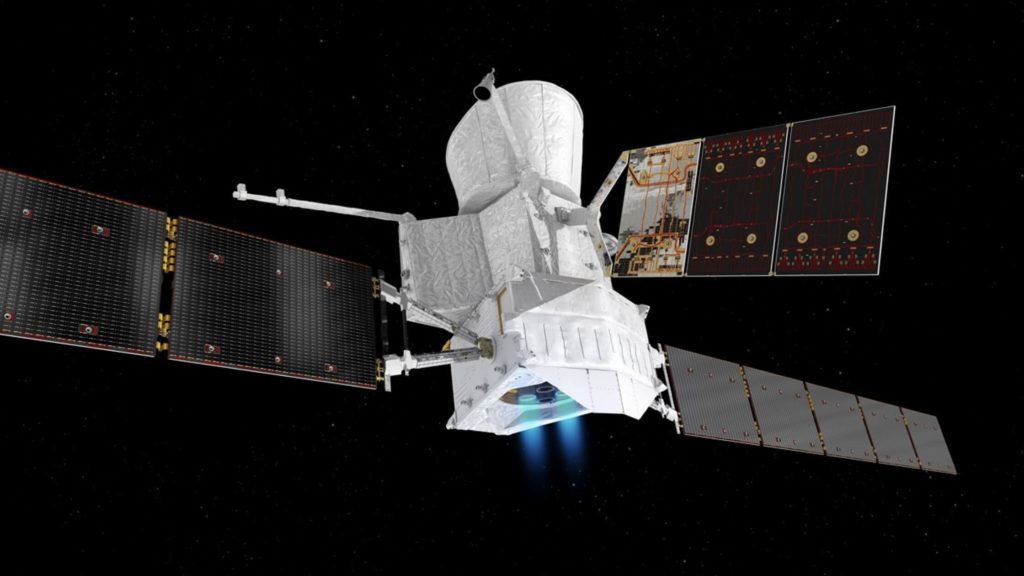BepiColombo Mission to Mercury is one of the sought after space missions dedicated to the smallest and innermost planet of our solar system. Launched on 20 October 2018, this space probe recently completed the first of the two Venus flybys on its seven-year interplanetary cruise to Mercury. Intended to do a comprehensive study of Mercury, the BepiColombo space mission will assist in revealing the hidden secrets of the universe.
Development of BepiColombo Mission to Mercury
BepiColombo is a joint mission of the European Space Agency (ESA) and the Japan Aerospace Exploration Agency (JAXA). This is the first mission to Mercury for both Europe and Japan. This ESA-JAXA Mercury mission was launched into space on the Ariane 5 rocket from Centre Spatial Guyanais launch site of Kourou, French Guiana at 01:45:28 GMT on 20 October 2018.
Why the Spacecraft is named BepiColombo?
This space probe is named BepiColombo to show the mark of respect to the Italian scientist, mathematician and engineer named Giuseppe “Bepi” Colombo. He is known for his contribution to studying planet Mercury and for determining how to place a spacecraft successfully into orbit around the planet.
Impotent Updates From Current Events In Science and Technology –
- CRISPR-Cas9 Genome Editing Explained
- Nobel Prize in Physics for 2020
- AstroSat Discovers A Star Galaxy Located 9.3 Billion Light-Years Away
- ISRO Gets Patent For Manufacturing Moon Soil
Scientific Instruments in BepiColombo
There are two orbiters in the BepiColombo are Mercury Planetary Orbiter (MPO) of 2,540 pounds by ESA and Mercury Magnetospheric Orbiter (MMO) of 606 pounds by JAXA. MPO is responsible for analyzing the surface and internal composition of the planet, on the other hand, MMO is there to study the magnetosphere of planet Mercury. Both of these orbiters are supposed to operate for about one year once deployed in the orbit. This is to be noted that the BepiColombo mission lacks the lander part due to budgetary constraints.
BepiColombo Route to Planet Mercury
En route to Mercury, BepiColombo will trace a trajectory that consists of a total of 9 flybys (one for Earth, two for Venus, and six for Mercury) for successful orbital insertion. These flybys are governed by the gravitational pull of the planets and assist in directing and controlling the speed of the spacecraft.
| Key Dates (projected) | Flybys |
| April 13, 2020 | Earth flyby |
| Oct. 16, 2020 | Venus flyby |
| Aug. 11, 2020 | Venus flyby |
| Oct. 2, 2021 | Mercury flyby |
| June 23, 2022 | Mercury flyby |
| June 20, 2023 | Mercury flyby |
| Sept. 5, 2024 | Mercury flyby |
| Dec. 2, 2024 | Mercury flyby |
| Jan. 9, 2025 | Mercury flyby |
A UK-based company, QinetiQ has developed solar-electric ion thrusters used in the propulsion system of the BepiColombo mission. The flybys and the thrusters will help control the effect of the gravitational pull of the Sun.
When will BepiColombo Reach Mercury?
It is a 7 years journey that needs to be covered by the spacecraft to ultimately establish itself into the orbit of the Mercury. Started off on 20 October 2018, BepiColombo will reach by Mercury in 2021 to flyby the planer, after covering all the 9 flybys in the journey the mercury planetary orbiter will be inserted into the orbit probably on Dec. 5, 2025.
You May Also Like To Read-
- Blue Flag Certification – An Environmental Award
- What is Solar Minimum?
- Artemis Mission of NASA – A Journey To The Moon and Beyond
Past Missions to Explore Mercury
BepiColombo is the third mission to Mercury, the earlier two missions were from NASA – Mariner 10 and MESSENGER. Mariner 10, the last spacecraft in the Mariner program, was launched in 1973, to fly by the planets Mercury and Venus. MESSENGER probe was launched in 2004 and was established in the orbit of Mercury to study MErcury Surface, Space ENvironment, GEochemistry, and Ranging.
Challenges to the BepiColombo Mission to Mercury
Sun’s gravity is a major concern that is should be handaled strategically so the insertation of the probe into orbit can be done as supposed. Extreme temperature and radiations coming from the sun can affect the functioning of the orbiters.
